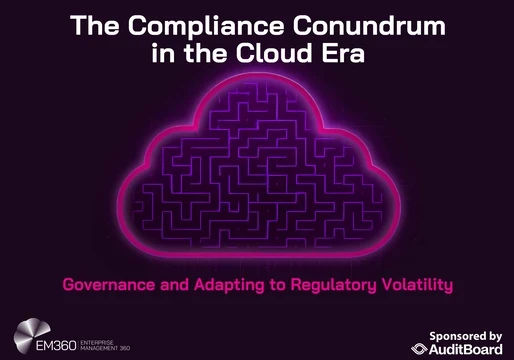Ransomware attacks continue to rise in both frequency and sophistication. They have evolved well beyond simple data encryption and ransom demands. Modern attackers are increasingly adopting double and even triple extortion methods that leverage stolen sensitive data for maximum pressure.
As highlighted in the 2025 Verizon DBIR, 90% of ransomware attacks in 2024 involved data exfiltration, up from 85% in 2023 and just 10% in 2019. This shift presents a significant challenge for CISOs relying on conventional detection-based strategies.

Exfiltration Takes the Spotlight
Today’s ransomware campaigns often focus less on IT systems and more on high-value data assets such as customer records, financial data, and intellectual property.
What makes this particularly difficult for defenders is that exfiltration frequently occurs in early stages—before ransomware is even deployed. Many traditional security tools fail to detect these early actions in time.
According to the 2025 DBIR, incidents involving intrusions and data theft have surged, with more than 7,300 disclosures. Attackers are combining credential theft, lateral movement, and stealthy malware to quietly extract sensitive data—often without triggering traditional malware alarms.
The report also states that 44% of all breaches in 2025 involved ransomware and more are incorporating data exfiltration as a key part of the attack. Threat actors are weaponizing stolen data by threatening to sell or leak it, even if the ransom isn't paid. It’s clear that exfiltration is now both a preferred and highly effective tactic.
Consider the potential financial and reputational costs. With modern extortion techniques, attackers threaten public exposure in addition to encryption. IBM’s 2024 Cost of a Data Breach Report revealed that breaches involving exfiltration averaged $4.91 million in damages, second only to destructive cyberattacks. In 2024, one of the largest known ransomware payouts, $75 million, was made to the Dark Angels group.
It’s not just ransom payments that impact organizations. Legal and regulatory fallout can follow breaches, especially under frameworks like HIPAA or GDPR, resulting in substantial fines and legal fees.
The damage also extends to trust and brand reputation. In a 2023 Vercara study, 66% of U.S. consumers said they wouldn’t trust a company with their data after a breach.
Why Legacy Defenses Fall Short
Despite widespread adoption of firewalls, endpoint detection and response and DLP systems, many organizations still struggle to prevent data exfiltration. A few key issues explain why.
Most legacy tools prioritize detection instead of real-time prevention. They depend on identifying known attack patterns, which modern threat actors evade through encrypted traffic, stolen credentials, or zero-day exploits. Techniques such as DNS tunneling, HTTPS exfiltration, and automated tools like Rclone often go undetected.
Additionally, these tools often operate in silos—covering only endpoints or network perimeters—while attackers exploit blind spots like hybrid environments and unmanaged assets.
Another challenge is adaptability. Traditional DLP tools frequently miss structured or disguised data and often fail to detect misuse of legitimate processes.
AI-driven attacks are also on the rise. SoSafe’s Cybercrime Trends 2025 report revealed that 87% of global organizations experienced an AI-assisted cyberattack in the past year. Attackers now dynamically adjust techniques in real time, further exposing the limitations of static, reactive tools.
Why Real-Time Prevention Is Key
To defend against modern ransomware threats, organizations must shift toward a prevention-first strategy. This approach enables earlier detection and aims to stop exfiltration before it begins. Real-time prevention enables organizations to:
• Block unauthorized data transfers—including via cloud apps, encrypted tunnels, or C2 channels—before exfiltration occurs.
• Proactively uncover vulnerabilities and misconfigurations that attackers exploit for access.
• Leverage behavior-based analytics to detect anomalies in data usage and movement.
• Use deterministic, signatureless technologies to prevent abuse without relying on known threat patterns.
Beyond improved security outcomes, prevention also lowers compliance costs. Regulations such as GDPR, HIPAA, CCPA, and New York’s SHIELD Act impose heavy penalties for data exposure. By preventing breaches outright, businesses reduce their regulatory burden and avoid costly litigation.
Prevention-first models also bring operational advantages: less alert fatigue, fewer investigations, and reduced recovery costs. With ransomware incidents averaging $5.13 million in 2024, avoiding these attacks saves significantly on legal expenses, incident response, and reputational damage. Most importantly, it enhances resilience—helping businesses maintain continuity even in the face of complex, multi-stage threats.
Conclusion: Stay Ahead by Shifting Left
The ransomware landscape has changed—and defenders must change with it. Security teams must shift from reactive detection to real-time prevention, stopping data exfiltration before it can cause harm. Those who embrace this proactive approach won’t just reduce their risk—they’ll gain a vital edge in today’s high-stakes threat environmen







Comments ( 0 )